England
Today, we crossed the English Channel, and docked in Southhampton, the port city for London to the east. Like our last port, it is several hours to the city from the port.
It turns out that, several years ago, a container ship lost a container at sea in the area. While containers float, they tend to do so just below the surface of the water.
Well, as luck would have it, this container eventually made its way to just off of the coast of Southampton. Because they are below the waterline, they are hard to see, and the container was hit by a ship, breaking open.
For better or worse, the container was filled with Legos. Of course, that means the ocean became polluted with plastic, but luckily (?) Lego’s float.
So this happened in 1997, and even today, 25 years later, Legos are washing ashore regularly in this area. So I know everyone was hoping we can bring them a trinket. I hope you like Legos!
😉
While Mrs. Karen opted to visit London, I went west to Stone Henge, to check another item off of my bucket list. (Yeah!)
Along the way, we passed through New Forest, a heavily forested area where wild horses roam freely. Very pretty, and I thought that through the trees, I could see “woodhenge”. (That is a different story. Maybe I’ll tell you sometime.)
The forest has oak trees, which of course means acorns. This was a problem with the wild horses, who get sick from acorns. So every year, during acorn season, all of the locals free their “house pigs”, allowing them and their babies to roam the forest and consume the acorns before the horses can get to them. (There are not any wild pigs or boar, so…) Anyway, I got a kick out of the term “house pig”. (It’s a real thing!)
An interesting fact. In the many forests of England (and there are many, and they are much more massive than you are imagining), there are not any dangerous animals. None! Consequently, people from here are terrified of what might eat them if they are in US, and think we are crazy for camping…
Our travels took us through Downton, England (which is nothing to do with the show). Cutest little village. Lots of cottages with thatched roofs.
It turns out that building thatched roofs is a dying art. The builders are called master-thatchers, and are highly in demand. Also, the first step is to lay a wire mesh across the roof. So, while a thatched roof house looks really cool, the mesh in the roof basically turn the house to a Faraday cage, and the residents are unable to use cellular telephones inside of the home.
So the one-and-a-half hour bus ride to Stonehenge sounds like a long trip, but considering the bus was affectively a time machine, taking us back some 5,000 years, it was a pretty fast trip.

Arriving at Stonehenge, I was very excited. You can’t really see it from the road, which has many small hills as you are driving parallel with the site. It turns out that it was eventually discovered that the hills are ancient burial sites, each containing one skeleton, presumably an important person in their day.
So, like so many other similar sites, Stonehenge aligns with the sun during the two annual solstices, and also has formations that align with the northernmost moonsets and southernmost moonrises.
There is a lot of unknowns, because portions of the site were originally built using wood (which of course is no longer there). And there is evidence that some of the stones were moved 4,000 years ago, and additional stones were added. There is even ongoing debate about the anger of the entire site.
Also, many of the stone had fallen over, and were reset into place as late as the 1970s, when the site was purchased by the neighboring farmer for 6,600 British Pounds. He improved the site, closed off access, hired a local policeman for security, and began charging visitors. A few years later, he donated the site to the local government.
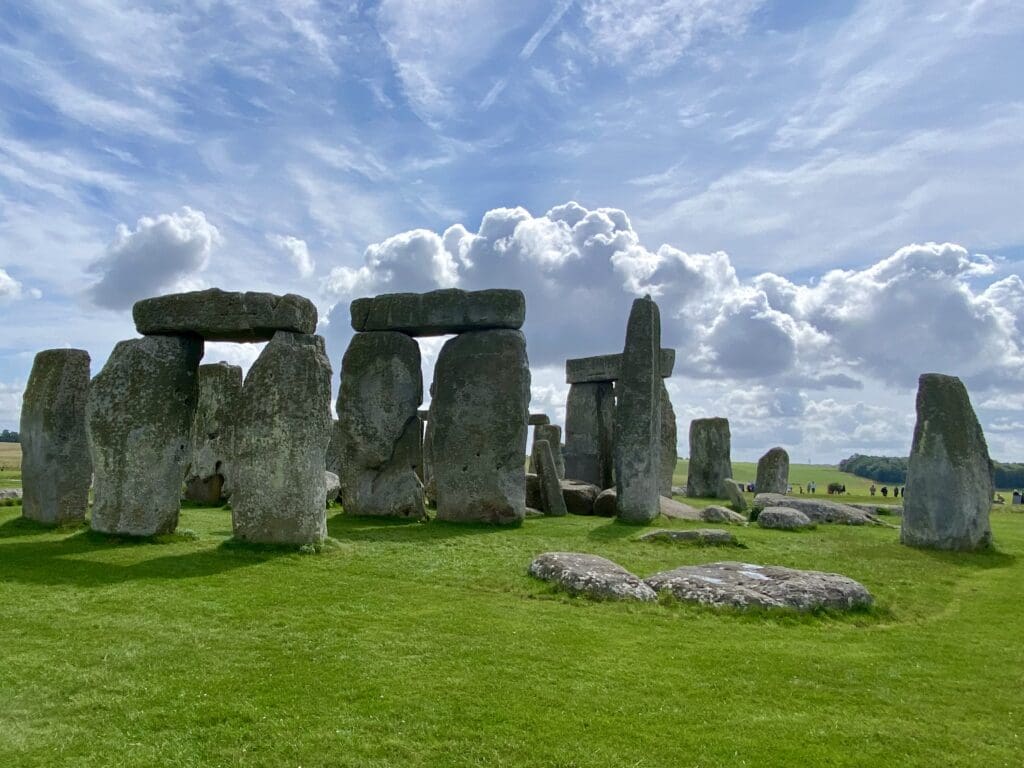
This was a good thing, because up until that time, many of the stones had been “reprovisioned” elsewhere over the centuries. Also, it was common practice until then to bring a chisel when visiting, and to break off a little souvenir to take with you. Yikes!
There are no written records indicating the history of Stonehenge. It is believed the building location was selected due to the natural clearing, caused by high chalk content in the soil that prevents trees from growing.
While no definitive proof of the who, what, wheres, and why’s of Stonehenge exist, it is widely accepted that it was a temple created in prehistoric times that aligns with the (perceived) movements of the sun. There are pretty good explanations of the various theories regarding this on the park’s Web site. However, I have to say that my first Google search said something about it being a widely accepted theory that Stonehenge was positioned to “track the sun’s movements”… (Nicolaus Copernicus is going to be disappointed about this theory!)
Some of the stones weigh up to 30 tons. Science has now determined that waterways were located in the vicinity, which were presumably used to transport the stones. There are believed to have been quarried from two locations, the nearest being some 15 miles away. Also of interest is that the newer stones are called “blue stones” and appear to have a bit of blue color to them.
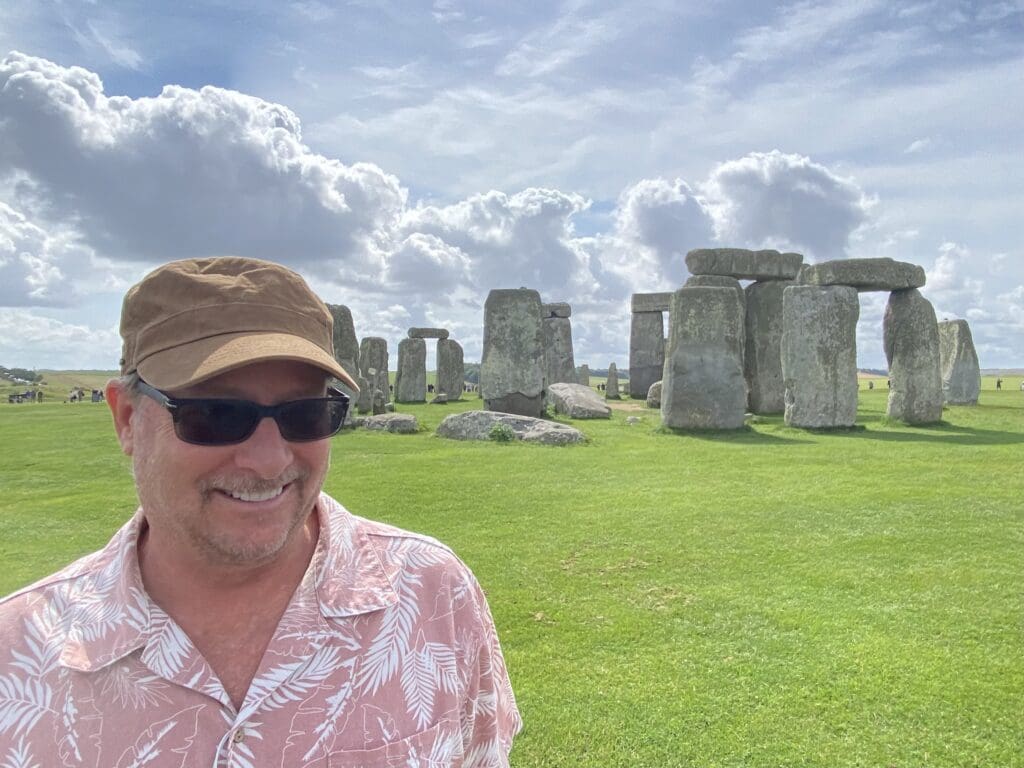
One last thing I found interesting. I have always heard whispers that imply that there may be a link to sites like Stonehenge, the Pyramids, Machu Picchu, and even Chaco Canyon. It has even been proposed that many of the sites “line up” with each other in some mystical fashion.
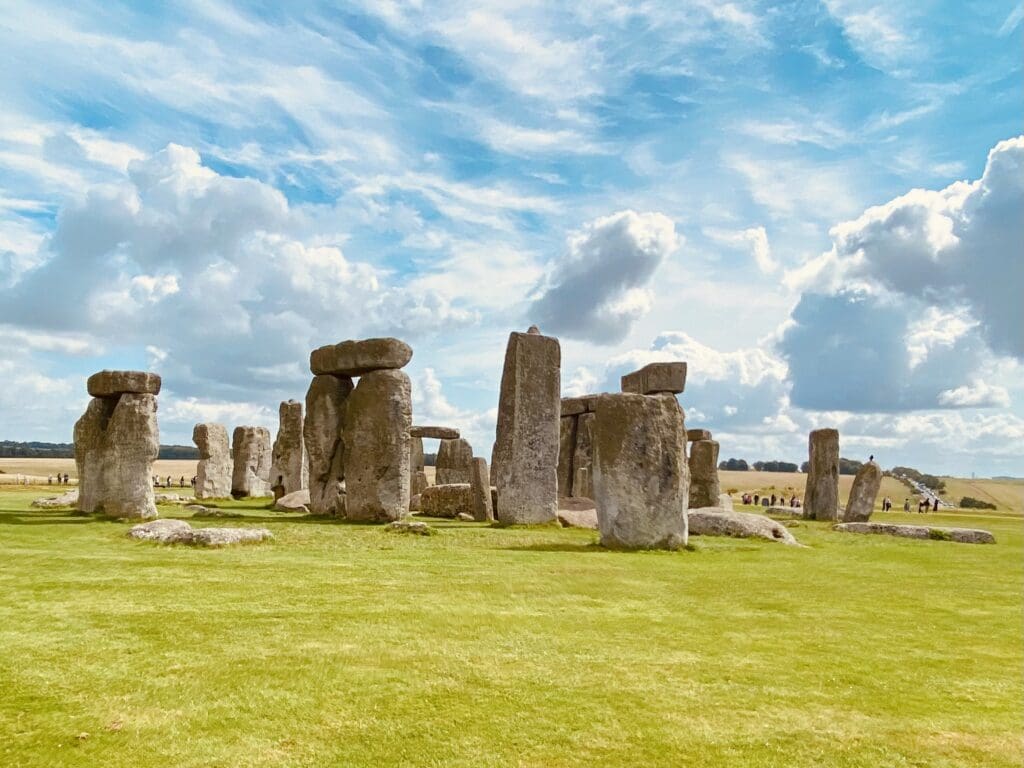
Our guide made a great point in that, the tectonic plates have shifted so dramatically in the ~5,000 or so years since these sites are believed to have been constructed that it is virtually impossible (with current science) to say definitely how these sites may have been aligned with one another during the various timeframes throughout the planet’s geographical history.
All of these things are so speculative that I have not provided many links here. (LMGTFY!) I’m hoping to learn more about such things when I grow up.
😉
While I did my best to take a few photos, there are many much more professional photos that are worth a looksie. (Looksie? Wow! I’ve only been here 4 hours, and I’m already talking British.)
One last cool thing is that there is a (gravel) road running near the site that allows locals to camp just West of the site. Close enough that they can see it. I wasn’t able to learn any more than that, but it seemed like a cool thing. (No campfires or anything. Just a road you can pull over on.) Imagine how cool to watch the sunrise from there!
So I was able to spend some time on the way back in the cute little town of Salisbury. In addition to its proximity to Stonehenge, the town has one other claim to fame. (Sorry, the steak was created by a New York City nutritionist.) Salisbury is where Sting, the U2 frontman, has lived for years though. (Apparently he changed his mind since singing “I Still Haven’t Found What I’m Looking For”…)
So I had a few beers and some lunch in a 1,000 year old pub in Salisbury. Very cool old place. It is supposed to be haunted. I didn’t see any ghosts, but they have a 500 tear old mummified hand there. Apparently the butcher was working that day, and a patron was caught cheating at cards. The rest of the story is a bit vague, because I purposely avoided this portion of their history on account of it being lunchtime and all…
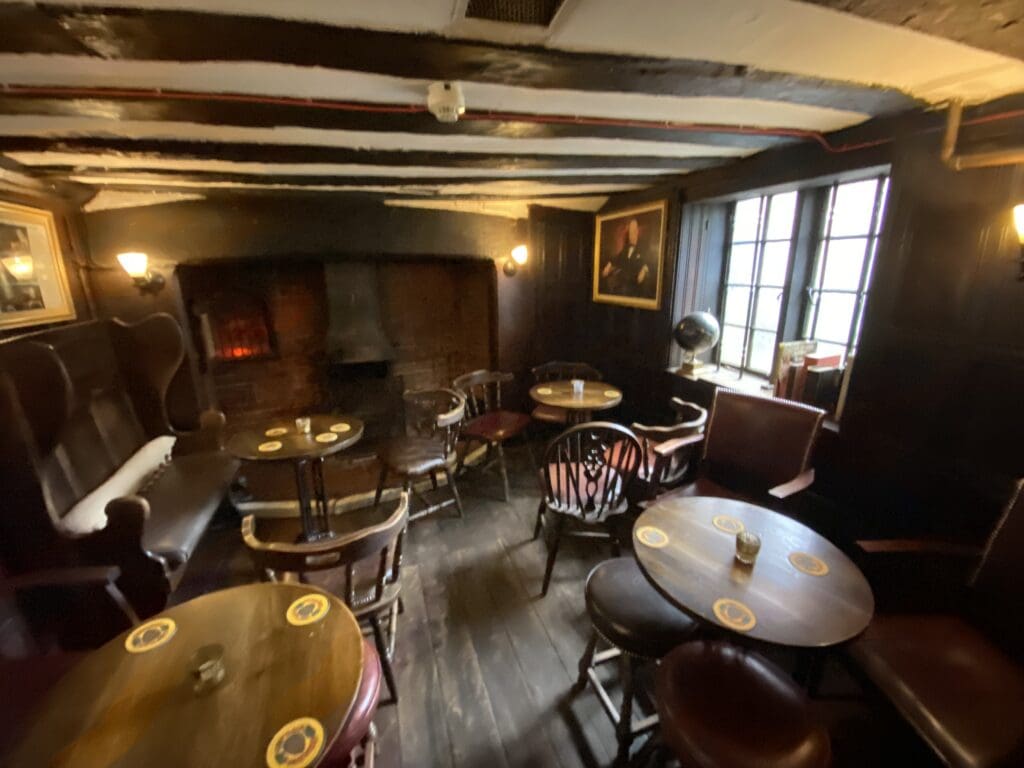
The town is also home to the beautiful Salisbury Cathedral, which houses the Magna Carta Chapter House. One of only four remaining copies, the Magna Carta is on display there. (Sorry, no photos allowed.)
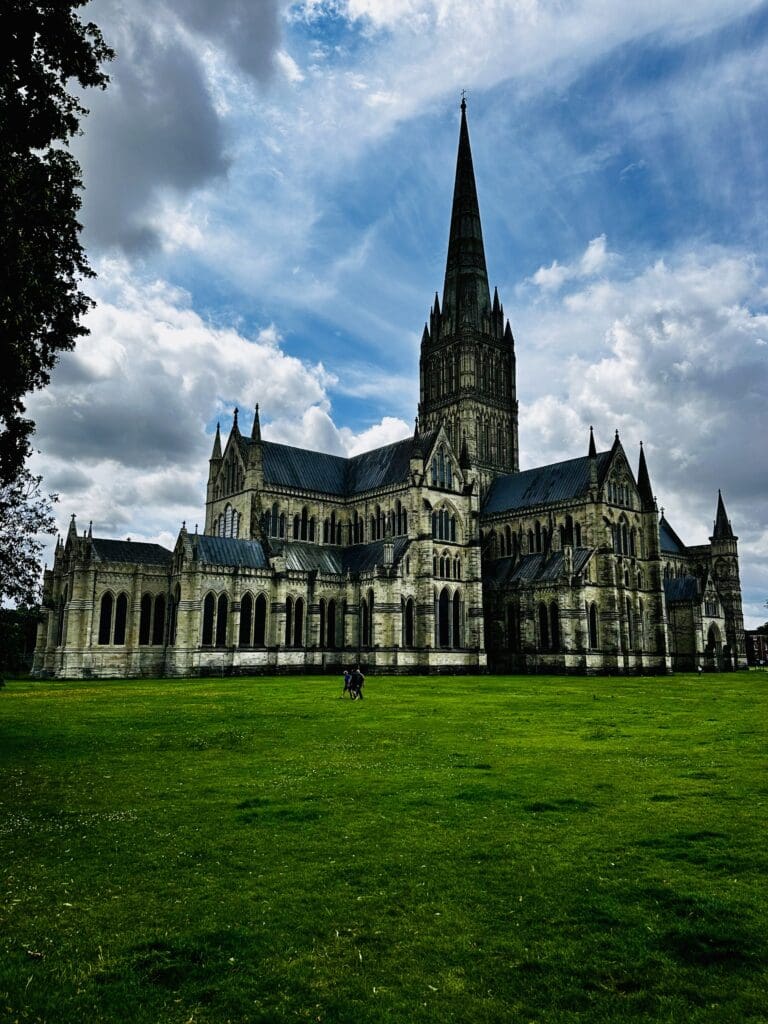
The Magna Carta is a 12th century document scribed on sheepskin parchment. It is the first document to state that the king is not above the law, and citizens are entitled to trials. This English document was the precursor to our constitution. I remember that, when I retired, I had a list of many, many things I was going to learn about. On the first day of retirement, I randomly selected an item from the list to study. That day, I read the Magna Carta, and the history of it. Very cool stuff.
Karen had no interest in visiting Stonehenge, and instead visited Windsor Castle. She had wanted to visit Buckingham Palace, but the excursions to there were not very attractive.
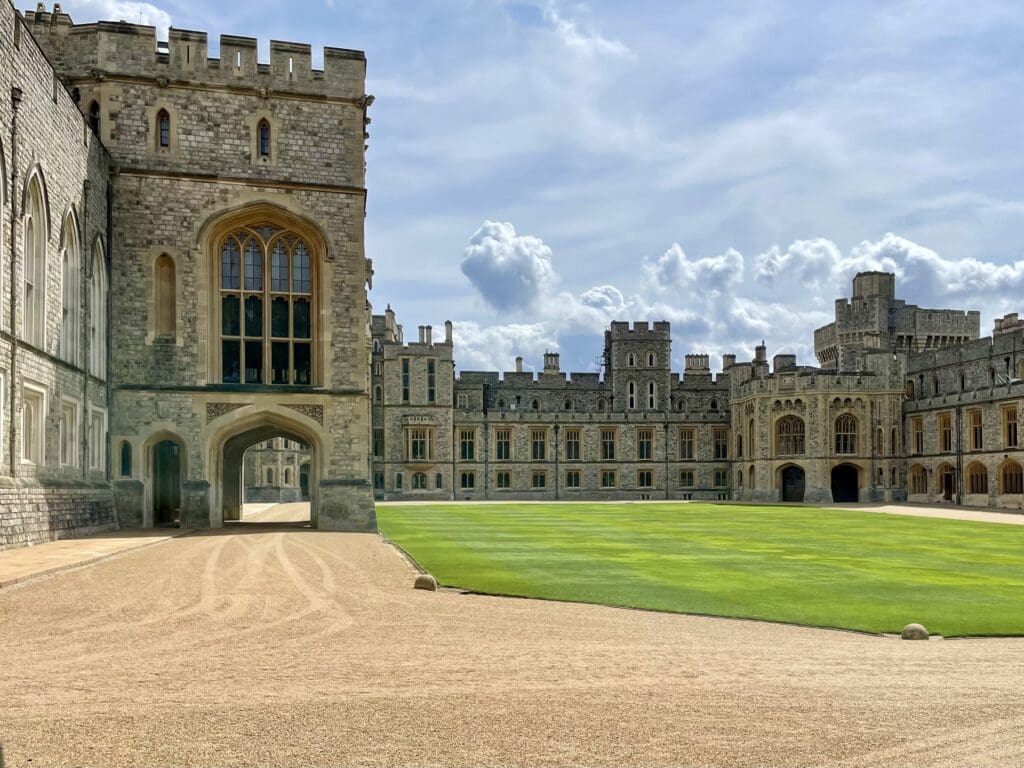
Her visit to the by castle was an all day endeavor that included an extensive tour of the castle grounds. She especially enjoyed visiting Saint George’s Cathedral, where the Queen is buried. (No pictuers were allowed inside of the castle though.)
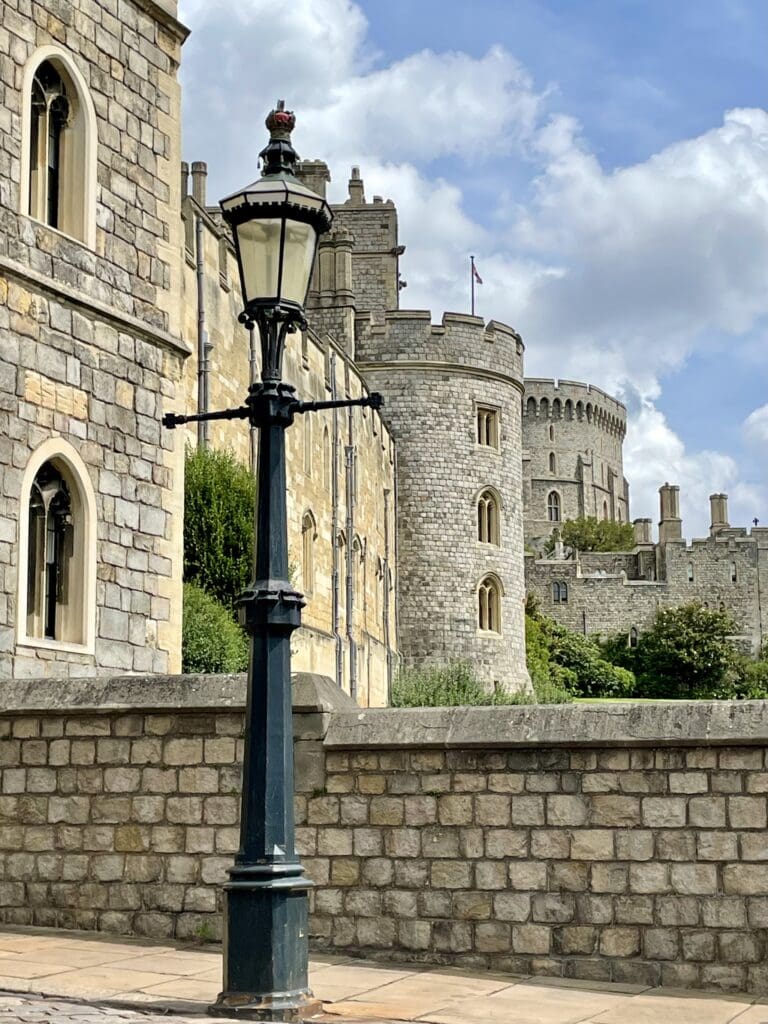
She also saw many cool places in the castle and on the castle grounds, such as where the Royal children played, the bedrooms and dining room, and many grand ballrooms with art on display. She was a happy girl.
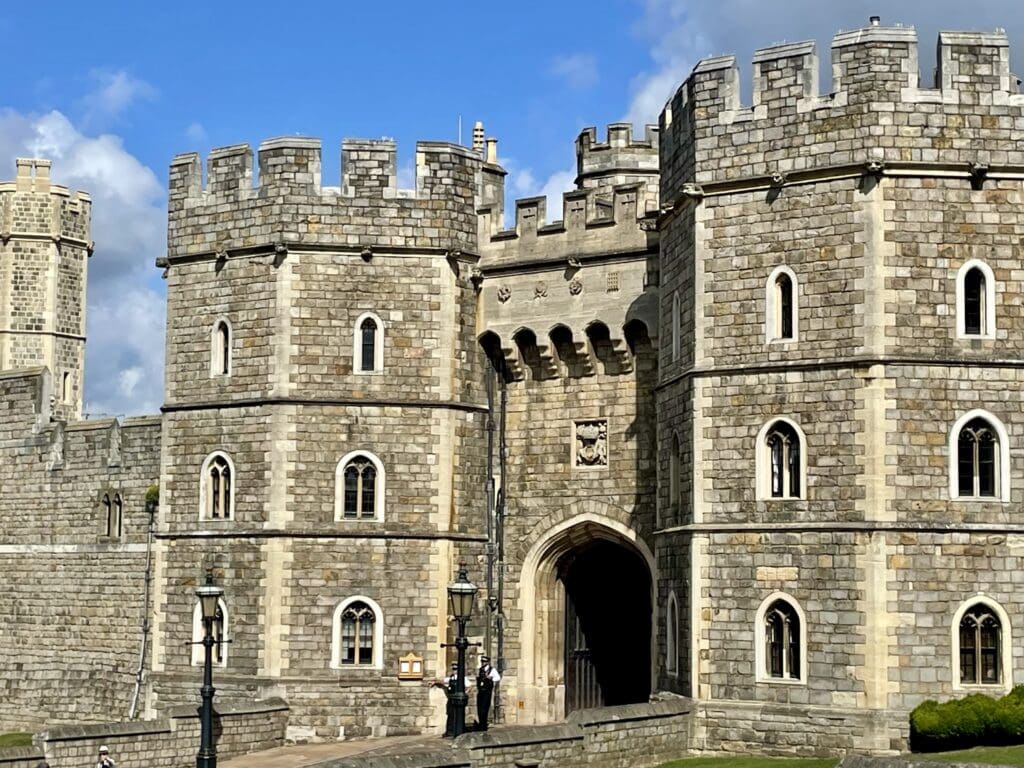
She ate at an old local pub near the castle. Her fish and chips at a nearby restaurant, but like the ones I tried in Salisbury, the ones at the pub near the Blarney Castle, surprisingly, were much better.
So, while we did not get to enjoy our day together, we both had a fabulous time. We spent our evening exchanging stories and planing tomorrow’s trip to Belgium. Ahh, but I am getting ahead of my self, for that is a story for another day.
Thank you for visiting. As they say in England, “Hello, Goodbye”.
😉
– Mike
“You can tell your guitar things that you can’t tell people. And it will answer you with things people can’t tell you.” – John Lennon

Recent Comments